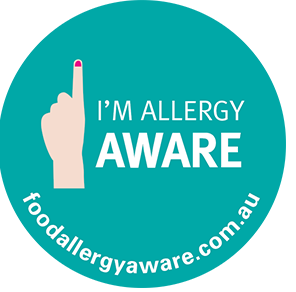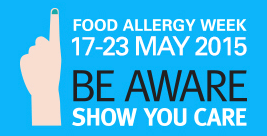This week is Food Allergy week! “1 in 10 children born in Australia will develop a food allergy” That is a very scary statistic! It is important to understand the impact that an allergy can have on your child, what common triggers are and how you can treat them. There seems to be a lot of confusion in understanding the difference between a food allergy or food intolerance. For anyone wondering what the difference is, have a read below:
FOOD ALLERGY
- Immune response
- Involves the immune system
- Causes severe allergic reactions (anaphylaxis)
- Can be life threatening
- Symptoms occur every time the food is ingested:
- wheezing
- stomach upsets
- diarrhoea
- skin rashes (hives, eczema)
- itching, burning, swelling around the mouth
- wheezing, coughing, asthma
- anaphylactic shock
- Most common food allergens:
- Cow’s milk
- Egg
- Peanuts
- Tree nuts
- Shellfish
- Fish
- Sesame
- Wheat
- Soy products
- Identification:
- Some symptoms can appear immediately once the food is consumed which makes the process of identifying the allergen much easier.
- Maintain a food dairy and see if you can identify patterns
- Eliminate suspected food from diet for a couple of weeks, then reintroduce to see if there are any symptoms
- Skin prick tests
- Allergy blood tests
- Treatment:
- Cease eating the food
- Discuss with your doctor whether it is required to carry Auvi-Q or Epi-Pen (epinephrine shots)
FOOD INTOLERANCE
- Chemical reaction
- Does not involve the immune system
- Does not result in an anaphylactic reaction
- Not detected on allergy testing
- Symptoms often resemble a food allergy
- Rapid breathing
- Headaches, migraines
- Diarrhoea
- Breathing problems like asthma
- Palpitations
- Skin rashes (hives, eczema)
- Not life threatening
- Most common causes of food intolerances:
- dairy
- eggs
- flavour enhancers (such as MSG)
- food additives
- strawberries, citrus fruits, tomatoes
- Identification:
- Maintain a food and mood diary to identify any patterns
- Eliminate suspected food from diet for a couple of weeks, then reintroduce to see if there are any symptoms
- Treatment:
- Avoid or cut back the food in your diet
WHAT CAN YOU DO?
- Visit www.foodallergyaware.com.au to find out more

- Visit your GP, rule out the possibility of any allergies by:
- Skin prick allergy tests
- Blood allergy tests.
- If you do not have allergies, then it is quite likely you may suffer from food intolerances.
We can help you! Our family has a multitude of food intolerances (each and every one of us!!) It has taken us quite a while to get to the bottom of these, and to pinpoint all of them but we have got there! Removing harmful food additives was our first step. It can seem daunting, but having Additive Free Kids assisting you it will be manageable! Send us an email today – info@additivefreekids.com.au to see how we can hep you.


 My passion and mission is to work with families to reduce the overwhelm when going additive free. Moving to additive free living can bring back peace, calm and joy to families. I know it's possible and I've experienced it first hand with my 5 boys.
My passion and mission is to work with families to reduce the overwhelm when going additive free. Moving to additive free living can bring back peace, calm and joy to families. I know it's possible and I've experienced it first hand with my 5 boys.



